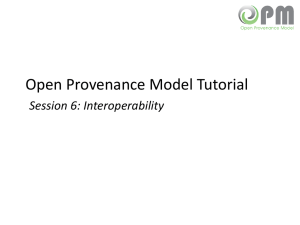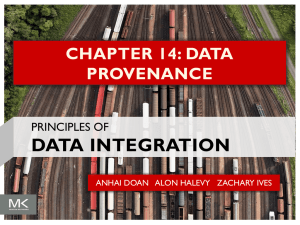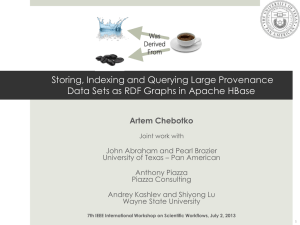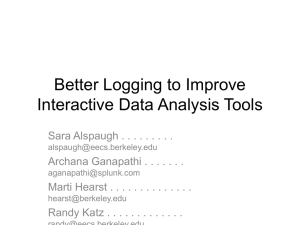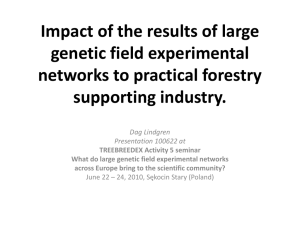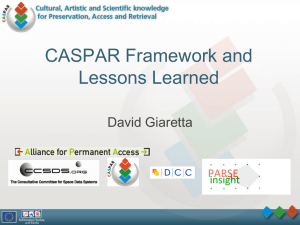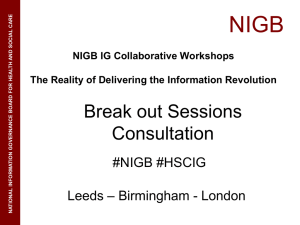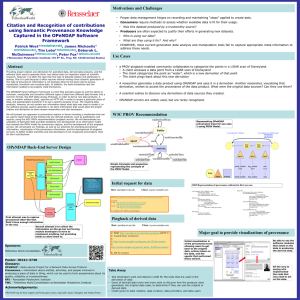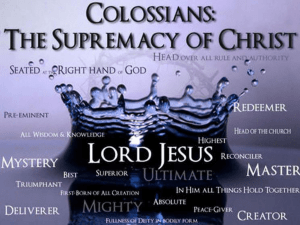Privacy-Aware Location-Aided Routing in Mobile Ad
advertisement
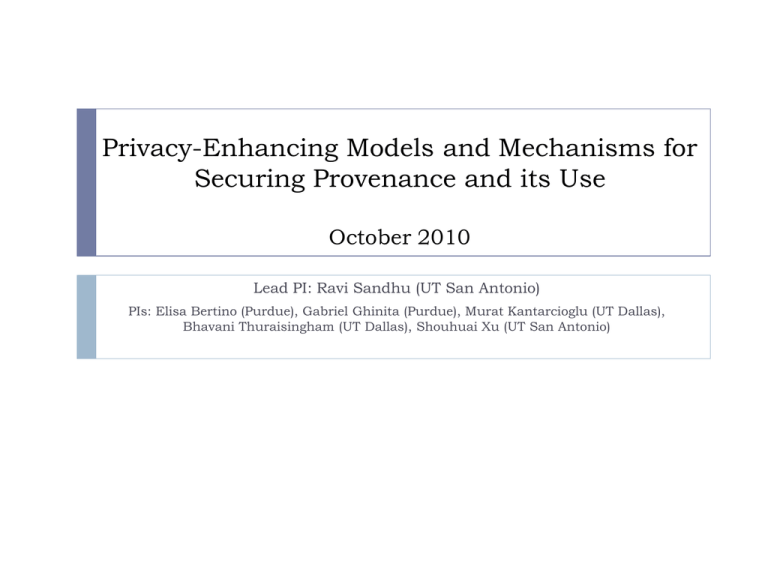
Privacy-Enhancing Models and Mechanisms for Securing Provenance and its Use October 2010 Lead PI: Ravi Sandhu (UT San Antonio) PIs: Elisa Bertino (Purdue), Gabriel Ghinita (Purdue), Murat Kantarcioglu (UT Dallas), Bhavani Thuraisingham (UT Dallas), Shouhuai Xu (UT San Antonio) Provenance Helps Enhance Security Access and Usage Control of Data and its Provenance Data Trustworthiness (e.g., sensor networks) Data Data Forensics (e.g., SIM tools) Provenance Data Privacy (e.g., track hospital records) etcetera 2 But Provenance Itself Must Be Secured! Security Requirements for Provenance Access and Usage Control Privacy Provenance disclosed at a level that preserves data and source privacy Integrity Only authorized users may access provenance, and data based on provenance for appropriate purpose Ensure that provenance is authentic and not tampered with Accountability Subjects accountable for data changes, even when they are anonymous Contributions 1. 2. 3 Privacy-enhancing framework (i.e., models and mechanisms) for securing provenance lifecycle Design and implementation of mechanisms for secure provenance management at OS layer and Data Layer Provenance Life Cycle processing generation dissemination accountability compliance 4 Proposed Secure Provenance Core Layer Application Layer Access/Usage Control Privacy Integrity Accountability Proposed Core of Secure Provenance Systems Logical Structure and Physical Storage of Provenance 5 Representation of Provenance Directed Acyclic Graph (DAG) Nodes represent entities (sources) that forward/modify data Node labels capture type of operation performed E.g., concatenation, set difference, etc. Edges capture data flow Logical and physical provenance People and system/machine provenance 6 Logical provenance captures actual changes in data Physical provenance models “forwarding only” cases People attributes changes in data to a person or organization System/machine tracks provenance wrt software/hardware Provenance DAG Example A B C “Logical” Provenance “Physical” Provenance D E Concatenate(A,B) F “Physical” Provenance Logical Physical 7 G … Z Data Item DI Set_Diff(D,E) No_Op No_Op No_Op Access/Usage Control: Challenges Traditional access control models not applicable Complexity of authorization conditions Authorization may depend on sequence of operations performed by sources Changes in policy Conflict resolution * Existing techniques do not apply to DAGs* Sources that contribute to the same data object may have conflicting policy requirements Reconciliation of source and recipient policies U. Braun et al, “Securing Provenance”, In Proc. of HotSec ‘08 8 Privacy Challenges and Techniques Private Data Private Provenance The most demanding protection scenario Non-Private Data E.g., news article must protect sources One challenge is to ensure that data contents do not inherently identify source Non-Private Provenance 9 Release provenance at appropriate granularity levels Generalize provenance E.g., identities of hospital patients must remain private, but the hospital where records originated may be released Sanitization E.g., instead of releasing employee and department name who modified document, only release organization name Cryptography Employ advanced cryptographic techniques that allow private evaluation of conditions E.g., private similarity evaluation of two provenance DAGs Integrity & Accountability: Challenges and Techniques Integrity: Accountability Authenticate source and content of provenance information Non-repudiation of a source’s role in the provenance chain even if annonymized for privacy Techniques 10 Conventional digital signatures may not be suitable Provenance is highly dynamic and may include multiple sources that may not know/trust each other Sources may need to remain anonymous Non-interactive Editable Signatures for Provenance Novel cryptographic techniques Prototypes Secure Provenance Management for OS 1. Provenance protection is achieved through trusted VMMs running within a higher trust domain than the OS OS-independent mechanism, where provenance is embedded as watermark in the data Maintains compatibility with existing applications XML Document Dissemination System 2. 11 Provenance is maintained at XML element level (finegrained) Protection through cryptographic tokens Summary Application Layer Access/Usage Control Privacy Integrity Accountability Proposed Core of Secure Provenance Systems Logical Structure and Physical Storage of Provenance Contributions 1.Privacy-enhancing framework (i.e., models and mechanisms) for securing provenance lifecycle 2.Design/implementation of mechanisms for secure provenance management at OS layer and Data Layer 12


